The reasons why Cádiz is so cool
Boasting a rich history, great food scene and wild landscapes, the province has been ranked on The New York Times’ list of best trips for 2019
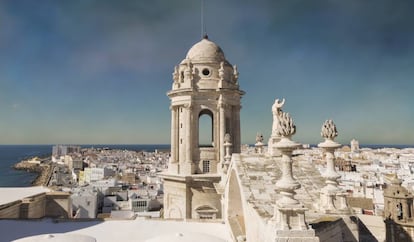
Cádiz is in style: it has just been included in The New York Times’ list of 52 Places to Go in 2019. The recognition comes on the back of acknowledgment from TripAdvisor, which last year ranked Cádiz eighth on its list of European Destinations On The Rise for 2018.
The journalist Andrew Ferren, who wrote about Cádiz for The New York Times’ list, lives in Spain himself and is no stranger to the southern province’s charms. “I am fascinated by its mix of atmospheres,” he says. “You leap from places as sophisticated and cultured as Jerez de la Frontera to wild landscapes that take your breath away, such as the beach in Bolonia or Alcornocales Park. It’s like the Wild West of southern of Spain.”
“Despite the fact that Cádiz was historically a major maritime link between America and Europe, it’s not very well known to the US public and it’s really worth a visit,” he adds. There are three main reasons why The New York Times recommends a trip to Cádiz:
Culinary delights
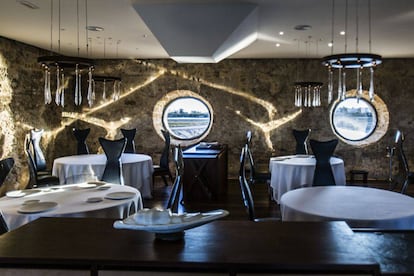
Suggestions include the new Western-style gastrobar Saja River, recently opened on Santa Elena street, and Código de Barra in La Candelaria Square. Ferren also suggests crossing the bay from the capital to Puerto de Santa María, where Angel León has his three-starred Michelin restaurant offering “a lyrical poem of seafood.” Just 40 kilometers from here, León has another restaurant within the Meliá Sancti Petri hotel called Alevante, which has just been awarded its first Michelin star. For something more casual, there is La Taberna del Chef del Mar, another of the chef’s brands in El Puerto.
To these suggestions, EL VIAJERO adds several of its own, including Restaurante Café Royalty, which opened opened in 1912, and the bookshop café La Clandestina (José del Toro, 23), which serves scrumptious breakfasts. There is also La Candela (Feduchy, 13) for tapas, while an exquisite combo of Andalusian and Norwegian fare is served at Patría restaurant, located on the hillside of Muela in Vejer de la Frontera.
Jerez de la Frontera and its wineries
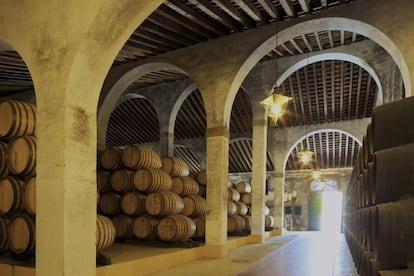
Around 36 kilometers to the north of Cádiz lies Jerez de la Frontera, known for the fortified wines known in English as sherry. Wineries from the region called Marco de Jerez (comprising Jerez proper, El Puerto and Sanlúcar) preserve their unique 18th and 19th-century atmosphere. Ferren recommends Díez-Mérito, Lustau and Bodegas Tradición. Foodies are told to seek out Lú in Jerez, owned by the chef JuanLu Fernández
The NMAC Montenmedio Foundation
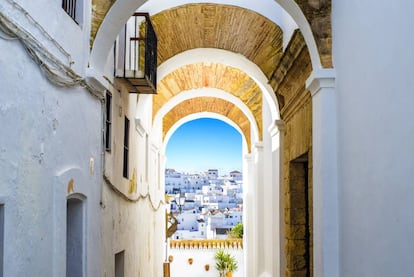
The NMAC Montenmedio Foundation of contemporary art sits between Barbate and Vejer de la Frontera. It is a private gallery exhibiting works by artists who are asked to come up with projects inspired by the local history and landscape. The center has work by Olafur Eliasson, James Turrell, Marina Abramovic, Pascale Marthine Tayou, Maurizio Cattelan and Santiago Sierra.
EL VIAJERO expands on Ferren’s recommendations with a few of its own:
1.The Cádiz Carnival

A unique and fun festival that takes place from February 28 to March 10. In fact it is so unique that it is applying to be included on the World Intangible Cultural Heritage list.
2. Barrio del Pópulo
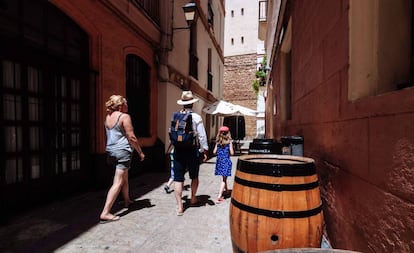
This is the oldest neighborhood in Cádiz and features an old Roman theater, the old cathedral and stone arches that lead to bohemian bars such as Pay Pay (Silencio, 1), a former brothel that now has live music, dance, improv and stand-up comedy.
3. Cádiz à la Havana
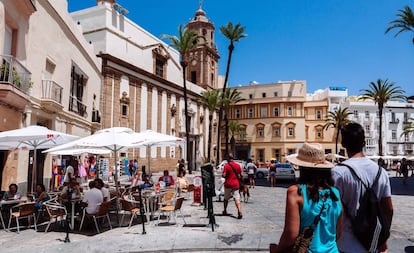
Stroll from the colonial-style Mina Square, with its ficus and palm trees, to the Provincial Museum containing Phoenician sarcophagi, to Campo del Sur avenue which was converted into a Havana esplanade for the 2002 James Bond movie Die Another Day.
4. A wealth of history
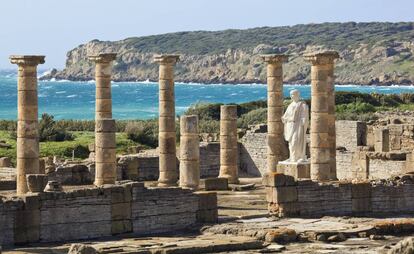
Standing on the frontier between two continents, the province of Cádiz has a long and action-packed history, while its capital is one of the oldest cities in Europe. Remnants of yesteryear can be seen at a number of archeological sites, including Baelo Claudia, Carteia and Doña Blanca.
5. Sanlúcar de Barrameda

Famous for its summer horse racing on the beach as well as for its wineries, this coastal town has been described by journalist Mariló García as a “dazzling city in Cádiz that boasts history, exquisite seafood, a city center with a mix of palaces and wineries as well as the incomparable landscape of Doñana Natural Park.”
6. Coast and mountains
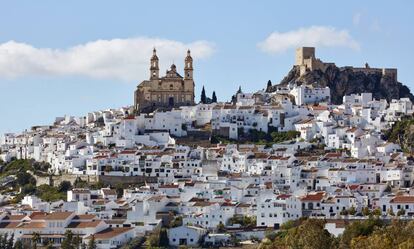
Cádiz has miles of windswept beaches that make it a perfect haunt for surfers of various descriptions. In less than an hour, however, you can be in the hills visiting quintessentially Andalusian white villages such as Medina Sidonia, Grazalema and Ubrique.
7. The flamenco route
Located in San Fernando, the Peña Flamenca Camarón de la Isla, named after the famous singer, has shows every week and is a good place to tune into some authentic flamenco artistry.
8. Conil de la Frontera
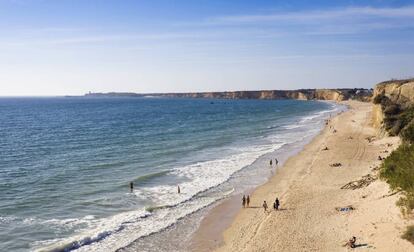
There are three national parks that stretch along Cádiz’s Atlantic coast – La Breña, Los Alcornocales and el Estrecho – as well as beaches such as Conil de la Frontera, which has the best beach bars around for watching the sun go down.
9. Surfing in Tarifa
In the inlets of Los Lances and Valdevaqueros in Tarifa, wind and kitesurfers can skid across the water with a view of Africa in front and El Estrecho national park behind them.
10. The white villages
Nineteen districts in the Cádiz mountains take you through a string of white villages – Alcalá del Valle, Algar, Algodonales, Arcos de la Frontera, Benaocaz, Bornos, El Bosque, Espera, El Gastor, Grazalema, Olvera, Prado del Rey, Puerto Serrano, Setenil de las Bodegas, Torre Alhaquine, Ubrique, Villaluenga del Rosario, Villamartín and Zahara de la Sierra. The villagers still whitewash their homes with lime as they did in the past, normally once a year before the local fiestas.
English version by Heather Galloway.
Tu suscripción se está usando en otro dispositivo
¿Quieres añadir otro usuario a tu suscripción?
Si continúas leyendo en este dispositivo, no se podrá leer en el otro.
FlechaTu suscripción se está usando en otro dispositivo y solo puedes acceder a EL PAÍS desde un dispositivo a la vez.
Si quieres compartir tu cuenta, cambia tu suscripción a la modalidad Premium, así podrás añadir otro usuario. Cada uno accederá con su propia cuenta de email, lo que os permitirá personalizar vuestra experiencia en EL PAÍS.
¿Tienes una suscripción de empresa? Accede aquí para contratar más cuentas.
En el caso de no saber quién está usando tu cuenta, te recomendamos cambiar tu contraseña aquí.
Si decides continuar compartiendo tu cuenta, este mensaje se mostrará en tu dispositivo y en el de la otra persona que está usando tu cuenta de forma indefinida, afectando a tu experiencia de lectura. Puedes consultar aquí los términos y condiciones de la suscripción digital.
More information
Archived In
Últimas noticias
Venezuela hardens its ‘revolutionary state’ project amid pressure from Trump
Sydney Sweeney, the actress praised by Trump: ‘Women are up against what society wants them to be’
The Bolsonaro surname: An advantage or liability in Brazil’s 2026 presidential elections?
Raúl Rocha, from jet-setting with Miss Universe to arms trafficking and fuel theft
Most viewed
- Reinhard Genzel, Nobel laureate in physics: ‘One-minute videos will never give you the truth’
- Pablo Escobar’s hippos: A serious environmental problem, 40 years on
- Charles Dubouloz, mountaineering star, retires at 36 with a farewell tour inspired by Walter Bonatti
- Why we lost the habit of sleeping in two segments and how that changed our sense of time
- The fall of a prolific science journal exposes the billion-dollar profits of scientific publishing










































